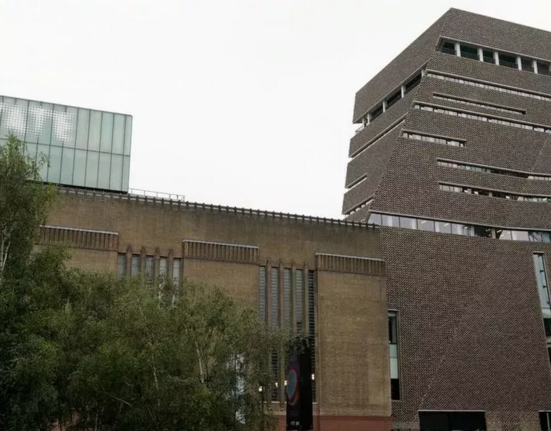Earlier this month, staffers at the General Services Administration, the federal agency that oversees, among other functions, the federal government’s vast real estate portfolio and a massive trove of fine art accumulated over the last two centuries, received an email from its new acting director, Stephen Ehikian, who Donald Trump appointed in January 2025. The Center for Fine Arts at the GSA has only about three dozen staffers; it’s not really known outside of government circles, but it’s built one of the largest and oldest collections of art in the country and controls the purse strings to a decent expansion budget. Each of the roughly 1,500 buildings the GSA owns is allotted at least 0.5% of its budget’s construction cost to commission or maintain artworks for its walls. There are more than 26,000 artworks under the agency’s purview, including Civil War–era paintings, the expansive mural projects of the WPA, and a 60-foot-tall Alexander Calder sculpture in front of the Mies van der Rohe–designed federal center in Chicago.
The GSA might not be the sexiest independent agency in town, but those working the art desk on F Street were tasked with maintaining commissioned works by American masters that would usually be seen within the walls of museums. Ed Ruscha gave a stunning diptych to a federal building in San Francisco in 2007. Robert Mangold fashioned a gigantic tricolored sculpture for a courthouse in Buffalo in 2011. Jenny Holzer’s scathing marble message benches dot a research center in Silver Spring, Maryland. A giant Mark di Suvero stands in front of the Coast Guard headquarters in DC. Catherine Opie’s photos of Yosemite are installed throughout a courthouse in Los Angeles. The list goes on and on.
Ehikian, a Silicon Valley journeyman with no experience in government, was curt in his email.
“This email serves as notice that your organizational unit is being abolished along with all positions within the unit—including yours,” Ehikian said in his note. He added that abolished groups “no longer align” with the administration’s priorities.
Suddenly, tens of thousands of artworks had nearly no stewards. Chaos followed. A source who recently worked for the GSA told me staffers were concerned about buildings being rapidly sold to further the cult of cost cutting that has marked the early months of the second Trump administration. The site-specific commissions at some buildings, the thinking went, might even jack up prices. There was also fear for the future of the thousands of more movable pieces. Without anyone there to check in on individual works, might they be damaged, lost, or looted? Jennifer Gibson, the director of the Center for Fine Art, started reaching out to her deputies and asked them to retain all their documents pertaining to individual artworks and how to care for them, as well as documents about in-progress commissions she hoped would be carried out at some point.
“This needs to be a priority,” she said, according to a copy of the email obtained by The Washington Post. Gibson directed a request for comment for this story to the GSA’s spokesperson, Jeff White, who declined to comment on personnel and internal discussions.
The dismantling of the GSA’s arts programming is just a small part of the Trump administration’s all-out attack on the arts and culture—or arts and culture outside its very narrow views on such matters. In many ways, it’s the culmination of a conservative dream. Think Jesse Helms calling Robert Mapplethorpe’s artwork “garbage” on the floor of the Senate, or Rudy Giuliani trying to shut down a show at the Brooklyn Museum because Chris Ofili made a Virgin Mary out of, among other media, elephant dung. The Heritage Foundation in recent years has been pleading for the elimination of the National Endowment of the Arts, making an example of performance spaces such as the Kitchen in New York, and artists such as Pope.L and Edward Kienholz.
Trump couldn’t quite get rid of that organization in his first term, as any funding to the NEA or the NEH has to be approved by Congress. This time, the administration seems to have found a work-around. Trump has yet to appoint an active director to either agency, effectively beheading them. And that’s to say nothing of his complete steamrolling of the Kennedy Center, where Trump kicked the Biden appointees off the board, got himself elected chairman, and promptly installed a loyalist as the interim director.
He’s also issued executive orders attempting to shut down the Institute of Museum and Library Services, which provides hundreds of millions in funding for cultural institutions. Trump appointed Deputy Labor Secretary Keith Sonderling as director to oversee the dismantling. On Monday, the organization’s board presented Sonderling with a letter stating that he could not proceed with Trump’s wishes, as the IMLS’s existence had been “authorized by law and funded by Congressional appropriation.” As with so many other Trump-backed plans at the moment, a court battle seems inevitable.
By Edward Ruscha, Photo by Carol M. Highsmith, U.S. General Services Administration.
Arguably the most immediate effects of Trump 2.0 in the arts could come from the ordered layoffs at the GSA. Over 30 large-scale commissions were funded in the last 10 years, and in the decades before that, the agency commissioned works by mid-century American masters such as Robert Motherwell, Frank Stella, Beverly Pepper, Louise Bourgeois, and John Chamberlain. The drastic cuts to the Center for Fine Arts—the shuttering of five field offices and the dismissal of more than half of the three dozen staffers—places the entire operation in peril, as the employees on leave were not able to tie up loose ends on ongoing commissions and restoration projects, according to the Post.
“The decision by the current administration really jeopardizes the preservation, the security, and the continued public ownership of this work that are really integral parts of the country’s cultural patrimony and heritage,” said Julie Trébault, the director of Artists at Risk Connection. The Paris-based international group helps protect creative freedom in autocratic-leaning states and other at-risk countries; it has recently extended that mission to the United States.
“I feel that beyond the preservation and survival of existing artwork, the decision of this administration to gut the art and preservation division of the GSA has really major implications for the commissioning of future work,” Trébault continued.
Most of the large commissions came through a program called Art in Architecture, which was founded in 1972 in a bipartisan effort to support the arts in public federal buildings. The effort has produced decades of thrilling and ambitious collaborations with the greatest living American artists, resulting in something like an ongoing sculpture biennale playing out in federal buildings across the country. The ’70s brought Louise Nevelson to Philadelphia, Isamu Noguchi to Seattle, and Claes Oldenburg to Chicago. The ’80s brought Dan Flavin to Anchorage, Robert Irwin to DC, and Robert Longo to Iowa City. The ’90s brought Michael Heizer to Reno, Martin Puryear to DC, and a truly life-changing Ellsworth Kelly installation to a courthouse in Boston. That’s to say nothing of the wall works commissioned by Alex Katz, Jacob Lawrence, Romare Bearden, Sam Gilliam, and the massive installations by Maya Lin and Sol LeWitt.
All of these works are now in danger of being neglected or sold along with the hundreds of buildings that the administration initially planned to put on the market. (That list was removed from the agency’s website in early March; on Tuesday, the GSA announced it would sell eight buildings.) Regardless of the plans to sell the buildings, the works may start deteriorating without the five disappeared field offices to check on them. Or perhaps the administration will take the logical next step of the DOGE-ification of the GSA’s art collection—and sell it?
Trébault believes it could happen and not just eventually. “I think very quick,” she said. “Will they go and start selling what they feel that they can get money out of?… It’s very difficult to say, but those moves lead me to believe that they will sell quickly because it’s very dramatic, very harsh, very abrupt.”
Gibson, the Center for Fine Arts head, understands the fraught nature of public art means that those who aren’t asking to be confronted with modernism or the avant-garde have to face it all the time, maybe even every day on their way to work. This has backfired in the past. In 1979, the GSA commissioned Richard Serra’s Tilted Arc to be displayed at a federal plaza in Manhattan, only to dismantle the work after widespread outcry, fierce support from fellow artists, public hearings, and eventually a ruling by a court of appeals.
“Generally [the art] seems to be well-received—people not surprisingly have very strong opinions about art, so there will always be the person who says, ‘Ugh, I hate it’ or ‘I don’t like it’ or ‘My child could have done it,’” Gibson said in December 2022 on the podcast Preservation Perspectives. “And there are other people who marvel at both the work and at the fact the federal government has this commitment to including art in these federal buildings, and see this as a legacy for the future.”
Trump is firmly in the “my child could have done it” camp. The president’s antipathy toward fine art and design goes back to when he met Andy Warhol, who left their meeting with the idea to make a series of work about Trump Tower, but Trump declined to buy the paintings. (“I think Trump’s sort of cheap, though, I get that feeling,” Warhol said at the time.) And while building that Fifth Avenue high-rise, Trump initially promised to donate the Art Deco artworks on the side of the former Bonwit Teller building he was demolishing to the Metropolitan Museum of Art. There was a big lattice-work bronze above the entrance and two large limestone reliefs depicting women dancing with scarves.
Instead of the pieces being donated, they were destroyed.
During his first term, Trump tried to at least tamper with the Art in Architecture program. In 2020, he declared by executive action that all artworks must “depict a historically significant American” and that these artworks must not be “abstract or modernist representation.” But at that time, the GSA’s art staff remained in their jobs. Of the dozen large-scale commissions in the years after that order, all are abstract, and none depict Americans.
Now, the new administration seems hellbent on dismantling the art-funding mechanism of government as part of a broader shunning of a liberal-arts-supporting globalism.
“The US has historically played a critical role in supporting artistic freedom globally, also through grants, through cultural diplomacy,” Trébault said. “And I feel there is a really strong wish from this administration to really crush artistic mobility, creative expression, to weaken this very flourishing sector and reduce this kind of either cross-border or exchange nationally between artists. “
Ehikian, the acting GSA director, has no history in government or the arts. He is the cofounder of RelateIQ, a data-scraping startup he sold to Salesforce. He then joined the software company run by Salesforce (and Time) owner Marc Benioff, left for another startup, and rejoined Salesforce after it acquired that startup as well. Ehikian’s wife, Andrea Conway, worked at X with Elon Musk. His brother, the real estate developer Brad Ehikian, tried to buy a GSA building in February for a lowball offer, prompting an anonymous complaint to the inspector general, as reported by the Post. Brad Ehikian did not respond to a request for comment. “At no time was there any consideration of selling the property at a discount or outside of GSA’s normal competitive process,” a spokesperson for the agency told the newspaper at the time.
In January, a former X employee named Nicole Hollander was placed at the GSA to oversee real estate. Hollander is the wife of Musk’s longtime capo Steve Davis—they slept at Twitter HQ with their newborn child following Musk’s takeover—and Davis has become the shadowy avatar for all DOGE activities throughout government agencies. Ehikian said at a recent town hall that “there is no DOGE team at GSA.” Wired has reported that in addition to Hollander, known DOGE associates such as Luke Farritor and Ethan Shaotran have been spotted in the headquarters. “Like we didn’t notice a bunch of young kids working behind a secure area on the 6th floor,” a source inside the GSA told the magazine.








